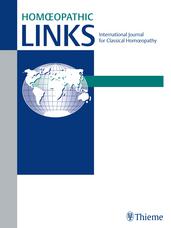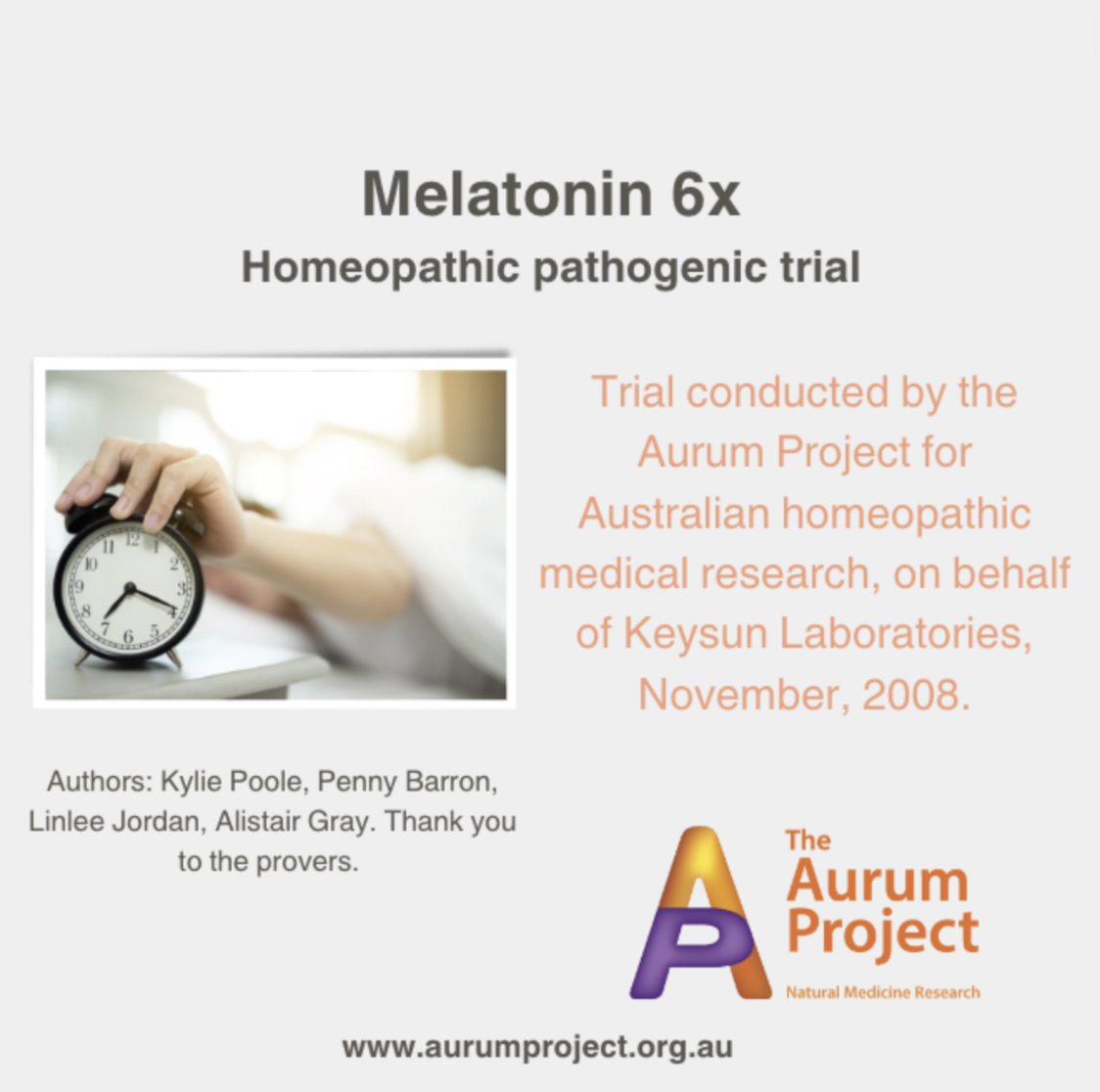 This blog was first published published 16/10/2011 and has been updated 27/8/2025
This blog was first published published 16/10/2011 and has been updated 27/8/2025
This homeopathic proving of melatonin 6x gave new insights into sleep, insomnia, mood, and memory from The Aurum Project’s research published in 2008.
Homeopathic Pathogenetic Trial (HPT) of Melatonin 6x
There is much confusion around the question of using melatonin for sleep problems. Opinions include the full spectrum between it being generally safe, non habit-forming and non-addictive; to warnings it should not be continued for more than two weeks; and using it to help withdrawals from other sleep medication addictions. If you read the full HPT you will have much more information about what actually showed up in the proving including:
- Anger and suppressed anger
- Dyslexia, mistakes in spelling and writing
- Ecchymosis, eye
- Forgetful of words while speaking (word hunting)
- Headaches
- Impatience and irritability
The original substance, Melatonin, chemically, is an indole, N-acetyl-5-methoxytryptamine, a derivative of serotonin, which in turn is derived from tryptophan. Melatonin is synthesized and secreted mainly but not exclusively by the pineal gland of all vertebrates and is described as a neuroendocrine transducer/ tranquillising hormone. This production of melatonin occurs in a rhythmic way and is stimulated by darkness and inhibited by light.
The proving, or Homeopathic Pathogenetic Trial (HPT), of Melatonin 6x was conducted by The Aurum Project for Australian homeopathic medical research, on behalf of Keysun Laboratories, and published in Homoeopathic Links, 24, no.3 (2011):193-194. The purpose of such provings is to carefully observe the effects of a substance in healthy volunteers at non-toxic doses, generating data that becomes part of the homeopathic materia medica. In the case of melatonin, the proving revealed themes around sleep, mood, cognition, and irritability, reflecting its complex role as a neuroendocrine hormone. Melatonin is widely known as the body’s natural sleep regulator, secreted by the pineal gland in response to darkness. However, its broader effects—on circadian rhythm, mood regulation, fertility, and even antioxidant activity—make it a substance of much wider significance than just sleep support.
At the same time, it is important to distinguish between the homeopathic melatonin 6x as in the proving and the clinical use of melatonin supplements, especially in children and adolescents. Conventional research notes that melatonin as a sleep aid remains controversial and should be approached with caution. Insomnia in young people is often linked to other sleep disorders or medical conditions, and these should be ruled out before melatonin is considered. For adolescents with Delayed Sleep Phase Syndrome (DSPS), carefully monitored short-term use of melatonin—taken about three hours before bedtime for 4–6 weeks—may be beneficial under medical supervision.
While parents may regard melatonin as a “natural” solution, it is in fact a hormone, and long-term safety data in children remain limited, particularly regarding bone health and sexual maturation. For this reason, conventional recommendations stress that melatonin should be used in reliably produced preparations, only for short durations, and never as a casual, ongoing supplement.
If homeopathic melatonin works, how does it do that?
Homeopathic melatonin uses a highly diluted form of the active ingredient, and it therefore works gently with your body’s natural rhythms. How exactly might this help you get a better night’s sleep? Homeopathic melatonin is believed to encourage your body to regulate its own sleep-wake cycle, rather than doing the work for it.
Unlike melatonin supplements, homeopathic melatonin may stimulate your body’s natural ability to produce and manage melatonin on its own. Think of it as giving your body clock a nudge rather than taking over completely. The aim of homeopathic melatonin is to restore balance and encourage a more sustainable sleep pattern.
HPT Information – Melatonin 6x
The function of the proving or HPT is to create information as a source for materia medica. The validity and reliability of the information gathered from HPT’s are therefore fundamental for the success of homeopathic practice and clinical research. HPT’s are unique to homeopathy. Their purpose is to test a substance, in this instance Melatonin 6x, at a non-toxic level, on healthy volunteers. This is done to determine the symptoms it provokes and the type of person who may be sensitive to it and which, according to the Similarity Principle, it may be used to treat.
Homeopathic dose of melatonin 6x is too small to risk adverse effects
HPT’s have certain things in similar to Phase 1 trials for new pharmaceutical products: they are conducted on healthy volunteers, but also there are important differences. The homeopathic doses used (in this case 6x) are too small to risk serious adverse effects and the data collected is mostly qualitative. Phase 1 trials intend, predominantly, to gather data about pharmacological data.
A proving is not designed to ‘prove’ that homeopathy works
The HPT is not designed to ‘prove’ that homeopathy works; but more to identify the effects of substances. They need to be replicated and then submitted to the rigorous process of systematic clinical verification, as suggested by Hering more than 100 years ago. Dr. Hering proved 72 remedies, out of which the following are the most important: Cantharis, Colchicum, Iodum, Mezereum, Sabadilla, Sabina, Psorinum, Nux moschata, Lachesis, Crotalus, Apis, Hydrophobinum, Phytolacca, Platina, Glonoin, Gelsemium, Kalmia, Ferrum-met, Fluoric acid, and Phosphoric acid.
The remedies which are the subject of the HPT’s have historically been taken on a voluntary basis. This is crucial for Homeopathy, as it ensures unprejudiced results. The HPT can often take a great deal of time and can be a tremendous amount of work and there are many associated costs. Therefore, it is important that this proving has been supported by Keysun Laboratories and the Aurum Project. This financial and organizational support has therefore come from homeopathic sources: a homeopathic pharmacy and a homeopathic charity.
Main themes from the proving of homeopathic melatonin
Themes from the symptoms reported in the participants/ provers notes noticed after the completion of the HPT are included in the full document.
The proving document includes:
Page 1 Melatonin 6x – Introductory notes
Page 2 Executive summary
Page 4 Summary of HPT methodology
Page 5 Themes from symptoms reported in participants/ provers notes
Page 7 Notes on the substance Melatonin
Introduction, Sleep problems, Jet lag, Cancer, Fertility and menopause, Depression Antioxidant use, Alzeimer’s disease, Gastrointestinal disease, Toxicology and potential for harm
Page 13 Provers notes and rubrics
Page 36 Combined rubrics from all provers
Page 41 Chronology
Page 43 References
Disclaimer: This blog is provided for educational purposes only and is not a substitute for professional medical advice. Always consult a qualified healthcare provider before starting or changing any treatment, especially when considering melatonin for children or adolescents.

